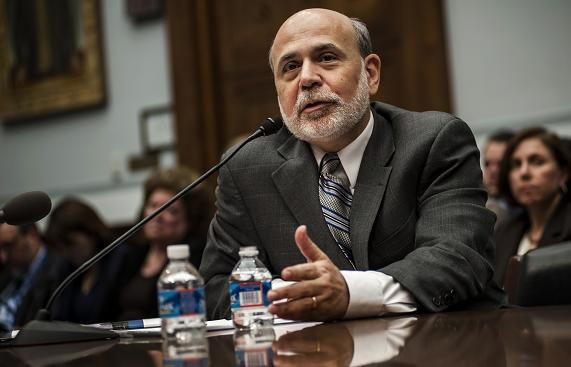Bernanke Testimony To Congress: Tapering Not On Pre-Set Course, Could Even Increase Purchases If Needed

U.S. Federal Reserve Chairman Ben Bernanke said in prepared testimony to Congress Wednesday that the reductions of the central bank's $85 billion a month bond-buying program are "by no means on a preset course." The Fed could leave the program intact or even increase purchases.
“I emphasize that, because our asset purchases depend on economic and financial developments, they are by no means on a preset course,” Bernanke said in remarks prepared for delivery to the House Financial Services Committee.
Bernanke noted that the conditions in the labor market are “improving gradually,” and the central bankers will focus on whether this continues.
The unemployment rate stood at 7.6 percent in June, about a half percentage point lower than in the months before Fed policymakers initiated the current asset purchase program in September. Nonfarm payroll employment has increased by an average of about 200,000 jobs per month so far this year.
Despite these gains, however, Bernanke said the jobs situation is “far from satisfactory,” as the unemployment rate remains well above its longer-run normal level, and rates of underemployment and long-term unemployment are still much too high.
While Bernanke slightly tilted toward easy money by repeating an intention to slow asset purchases later this year if the economy stays strong, in almost every other line he also tried to show that the Fed isn't backing away from its easy monetary policy if the economy weakens.
On the one hand, if economic conditions were to improve faster than expected, and inflation appeared to be rising decisively back toward the Fed’s objective, the pace of asset purchases could be reduced somewhat more quickly, the Fed chief said.
On the other hand, if the outlook for employment were to become relatively less favorable, if inflation didn't appear to be moving back toward 2 percent, or if financial conditions, which have tightened recently, were judged to be insufficiently accommodative to allow the Fed to attain its mandated objectives, the current pace of purchases could be maintained longer.
“If needed, the committee would be prepared to employ all of its tools, including an increase in the pace of purchases for a time, to promote a return to maximum employment in a context of price stability,” Bernanke said.
The Fed chief also emphasized that tapering, or quantitative easing (QE3), won’t be immediately followed by increases in interest rates.
“This is not a new development. It was also stressed in the press conference immediately after June’s policy meeting and in the minutes of that meeting. But by saying it again, Bernanke is ensuring that the message is being received loud and clear,” Paul Dales, senior U.S. economist at Capital Economics, said in a note to clients.
The hearing on the Fed's semiannual monetary policy report before the House of Representatives' Financial Services Committee begins at 10 a.m. ET. It'll be interesting to see if the Q&A during the actual testimony includes any more tapering tidbits. A second hearing is scheduled for Thursday with the Senate Banking Committee.
The Fed committee next meets July 30-31, followed by meetings on Sept. 17-18, Oct. 29-30 and Dec. 17-18.
© Copyright IBTimes 2024. All rights reserved.






















